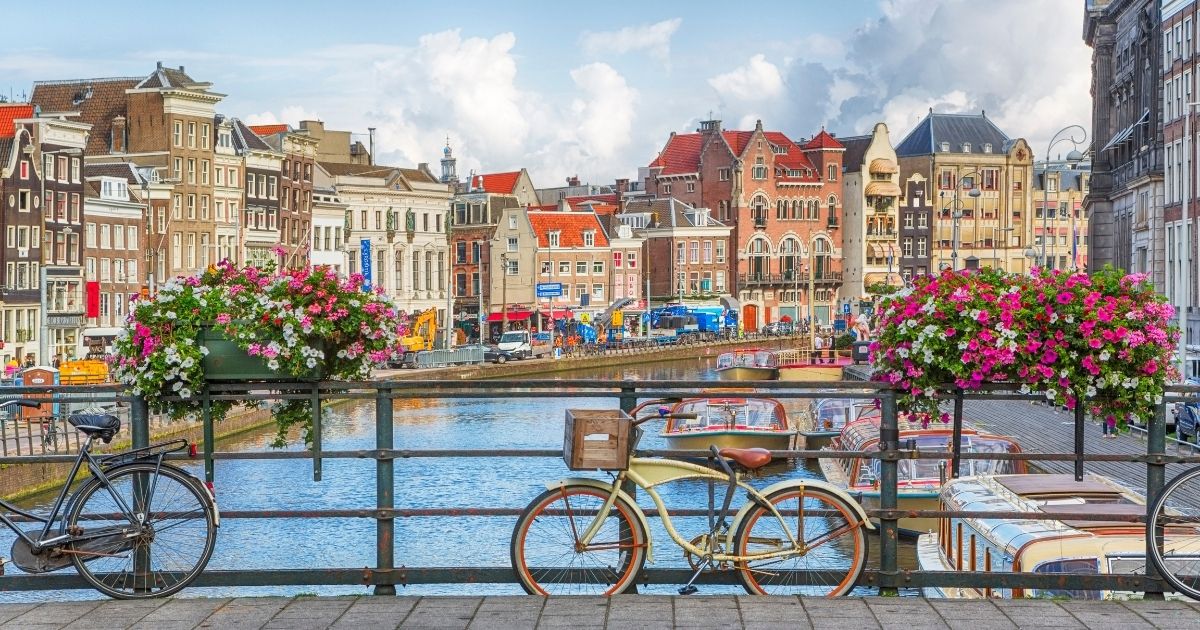Japan’s technological prowess isn’t just folklore—it’s a daily reality that transforms how digital nomads experience remote work. From bullet trains with seamless Wi-Fi to vending machines accepting digital payments, understanding how to access reliable internet in Japan becomes the foundation of a successful nomadic journey in this innovation-driven archipelago.
The Land of the Rising Sun offers a unique blend of ultra-modern infrastructure and deep-rooted traditions, creating an environment where ancient temples neighbor cutting-edge data centers. For digital nomads, this technological sophistication translates into connectivity opportunities that can revolutionize remote work productivity and professional growth.
Japan’s connectivity revolution: where tradition meets technological supremacy

Japan’s telecommunications landscape represents one of the world’s most advanced internet ecosystems. The robust internet infrastructure in Japan delivers consistently exceptional performance, with fiber-optic penetration reaching nearly 80% of households—a testament to the nation’s commitment to digital excellence.
The market features four major operators: NTT Docomo dominates with over 70 million subscribers and exceptional nationwide coverage, while au (KDDI) serves over 60 million customers with premium data services. SoftBank provides competitive pricing and innovative solutions, joined by newcomer Rakuten Mobile with aggressive pricing and modern network architecture.
💡 Did you know? Japan officially set a world record for internet speed in July 2024, reaching an astronomical 402 Tbps! Average fiber connections deliver 100-300 Mbps consistently across urban areas.
This competitive landscape means mobile internet in Japan offers exceptional value, with 5G networks expanding rapidly across major metropolitan areas. Urban centers like Tokyo, Osaka, and Kyoto enjoy comprehensive coverage, while rural areas benefit from ongoing infrastructure investments.
🌟 Pro tip: skip the traditional SIM hunting entirely with Holafly’s advanced eSIM technology, providing instant connectivity across Japan’s sophisticated networks without the complexity of store visits or Japanese paperwork requirements.
Navigating mobile internet in Japan: from 5G innovation to traditional excellence
Mobile carriers in Japan operate some of the world’s most sophisticated networks, with each provider offering distinct advantages for different user profiles. Understanding pricing structures for the internet in Japan reveals significant variations based on data requirements, contract duration, and provider-specific benefits.
NTT Docomo leads in coverage excellence, winning multiple Opensignal awards for nationwide reach and 5G availability. Their premium positioning reflects superior infrastructure investments, particularly beneficial for nomads traveling beyond Tokyo’s metropolitan boundaries into rural areas or mountainous regions.
KDDI’s au brand excels in entertainment integration, offering bundled services that combine mobile connectivity with streaming platforms and gaming services. This makes AU particularly attractive for content creators and media professionals who require both robust connectivity and entertainment production tools.
SoftBank focuses on data-centric plans with competitive pricing for heavy users, while Rakuten Mobile has revolutionized the market with unlimited data offerings at unprecedented price points, though coverage remains more limited in remote areas.
Real-world pricing strategies for internet services in Japan
Tourist SIM packages typically range ¥3,000-8,000 ($20-55 USD) for 7-15 day periods with 1-30GB data. Monthly plans for longer stays range ¥2,000-8,000 ($15-55 USD), with unlimited options from providers like Rakuten Mobile.
International residents seeking premium connectivity choose au or Docomo plans at ¥4,000-10,000 ($30-70 USD) monthly, including extensive 5G access and multilingual customer support.
Establishing fixed internet services in Japan: fiber-optic excellence and installation realities

Japan’s fixed broadband market showcases the nation’s commitment to fiber-optic supremacy. Nearly universal fiber availability means digital nomads can access world-class internet speeds even in residential areas, with most connections delivering 100-1000 Mbps consistently.
Setting up fixed internet in Japan requires understanding the unique dual-contract system where telecommunications companies (NTT East/West, KDDI) manage infrastructure while Internet Service Providers (ISPs) handle connectivity services. Many providers now offer integrated packages, simplifying this process into a single contract.
Provider landscape for fiber internet installation
NTT Hikari remains the market leader with speeds up to 1Gbps, taking 2-4 weeks for installation at ¥4,000-8,000 ($30-55 USD) monthly, including equipment.
KDDI au Hikari operatesan independent infrastructure with competitive speeds and mobile bundling opportunities. Installation fees range ¥20,000-40,000 ($140-280 USD), often waived during promotions.
SoftBank Hikari provides comprehensive packages including Yahoo! BB service, with volume discounts for mobile users. Their SoftBank Air wireless option offers immediate internet without cable installation.
Foreign-friendly installation services
GTN Hikari specifically caters to international residents, offering multilingual support in seven languages and handling all communication with landlords and installation teams. This service eliminates language barriers that often complicate fiber installation for foreigners.
Sakura Fiber Internet provides specialized services for foreign nationals, including translation services during installation appointments and advance negotiation with property managers. These services typically cost ¥2,000-5,000 ($15-35 USD) additional but eliminate significant logistical challenges.
💡 Did you know? Japan’s fiber infrastructure is so advanced that many rural areas enjoy better internet speeds than major cities in other developed countries, thanks to government initiatives ensuring comprehensive coverage across the archipelago.
Regional connectivity patterns: from Tokyo’s 5G density to rural excellence
Internet quality in Japan varies across regions, though even remote areas maintain impressive standards. Tokyo and Osaka enjoy the highest 5G density globally, with mobile speeds exceeding 50 Mbps and fiber reaching 1 Gbps.
Central Japan benefits from robust infrastructure supporting industrial and residential needs. Northern regions like Hokkaido present weather challenges but maintain consistent fiber performance year-round, often providing excellent value with lower living costs.
Southern Japan offers exceptional mobile coverage with growing 5G availability, while the subtropical climate creates ideal outdoor working conditions.
Practical connectivity considerations
Urban areas deliver premium experiences with public Wi-Fi networks and numerous coworking spaces. Tokyo hosts over 100,000 free Wi-Fi hotspots, while municipal networks cover Osaka and Kyoto.
Rural regions require strategic planning but rarely present serious limitations. Seasonal weather minimally affects connectivity, thanks to infrastructure resilience and extensive redundancy systems.
Bureaucratic requirements for the internet in Japan: documentation and installation processes
Accessing internet services in Japan involves specific documentation requirements that can challenge unprepared foreigners. Understanding these bureaucratic processes helps ensure a smooth setup and prevents delays that could impact professional productivity.
Mobile services require passport verification with entry stamps demonstrating legal presence in Japan. Tourist SIM cards offer the simplest option, available at airports and electronics retailers without residence verification. Longer-term mobile contracts typically require additional documentation, including residence cards or hotel confirmations.
Fixed internet installation demands more comprehensive documentation. Residence registration certificates (juminhyo) or lease agreements provide necessary proof of address, while some providers require Japanese bank accounts for automatic payments. International residents should prepare multiple forms of identification and address verification.
Streamlining setup processes for international users
Electronics retailers like Bic Camera and Yodobashi Camera offer multilingual support for SIM card purchases, with staff trained to assist foreign visitors. These locations often provide competitive pricing compared to airport kiosks while offering broader plan selection.
Online applications through provider websites increasingly offer English interfaces, though phone verification and appointment scheduling may require Japanese language assistance. Many coworking spaces and international housing services provide setup assistance as part of their orientation programs.
Property management companies in international-friendly areas often maintain relationships with internet providers, facilitating faster installation and English-language support throughout the process.
💡 Did you know? Some Japanese apartments come pre-wired with fiber connections from specific providers, potentially limiting choice but dramatically reducing installation time and costs for new residents.
Optimizing internet costs in Japan: maximizing value in a competitive market

Understanding pricing structures helps digital nomads optimize their connectivity investments while managing Japan’s relatively high living costs. The competitive telecommunications market creates opportunities for significant savings through strategic provider selection and timing.
Budget-conscious nomads can find excellent internet options in Japan through careful provider comparison and promotional timing. Tourist packages offer the best value for short visits, while unlimited plans provide cost-effective solutions for longer stays.
Contract timing significantly impacts costs, with major promotional periods coinciding with Japan’s academic calendar (April, October) and the New Year season. New customer incentives during these periods can reduce setup costs by ¥20,000-50,000 ($140-350 USD).
Bundling and promotional opportunities
Multi-service bundles combining mobile and fixed internet often provide substantial savings, particularly with SoftBank and KDDI offerings. These packages typically reduce monthly costs by 20-30% compared to separate contracts while simplifying billing and customer service.
Corporate and group plans available through some coworking spaces or international housing providers can offer preferential pricing for multiple users. These arrangements sometimes include English-language customer support and simplified cancellation procedures.
Seasonal promotions frequently waive installation fees and provide several months of reduced pricing. Monitoring provider websites and electronics retailers for campaign announcements can result in significant savings, particularly for longer-term stays.
Final thoughts
Successfully navigating internet access in Japan requires understanding both the technical excellence of available services and the bureaucratic realities of accessing them as a foreigner. Japan’s commitment to connectivity infrastructure means reliable internet is available virtually everywhere, from bustling Tokyo districts to remote mountain villages.
The key to optimization lies in matching your specific needs—duration of stay, data requirements, mobility patterns—with appropriate service combinations. Whether choosing premium NTT Docomo coverage for comprehensive rural access or budget-friendly Rakuten Mobile for urban-focused work, Japan’s competitive market ensures excellent options for every nomadic lifestyle.
For digital nomads seeking to establish Japan as a base for Asian operations or simply experience one of the world’s most fascinating cultures while maintaining professional productivity, the country’s internet infrastructure provides an ideal foundation. Consider exploring our comprehensive guide to the best cities for digital nomads to discover how Japan compares with other top nomadic destinations worldwide.
Ready to embark on your Japanese digital nomad adventure? Nomada simplifies every aspect of your nomadic journey, from connectivity solutions to cultural integration 👉
Frequently asked questions
NTT Docomo consistently delivers the fastest overall speeds, averaging 52.9 Mbps for standard connections and 194 Mbps for 5G services according to Opensignal testing. While Rakuten Mobile offers competitive 5G speeds, Docomo’s extensive infrastructure provides more consistent performance across diverse locations.
Tourist SIM cards are available for immediate purchase at airports and major electronics stores, providing instant connectivity. Fixed internet installation typically requires 2-4 weeks, though services like SoftBank Air offer immediate wireless solutions while permanent connections are established.
While helpful, Japanese language skills aren’t strictly necessary. Major electronics retailers offer multilingual support, and services like GTN Hikari provide comprehensive English assistance. However, having basic phrases or translation apps significantly simplifies the process.
Mobile plans range ¥2,000-8,000 ($15-55 USD) monthly, while fiber internet costs ¥4,000-8,000 ($30-55 USD) including equipment. Tourist packages cost ¥3,000-8,000 ($20-55 USD) for 7-15 day periods. Bundled services often provide 20-30% savings compared to separate contracts.
Japan’s internet infrastructure demonstrates exceptional resilience during natural disasters, with extensive redundancy systems and disaster-resistant equipment. Service disruptions remain rare even during earthquakes or typhoons, though mountainous areas may experience brief wireless interruptions during severe weather events.




